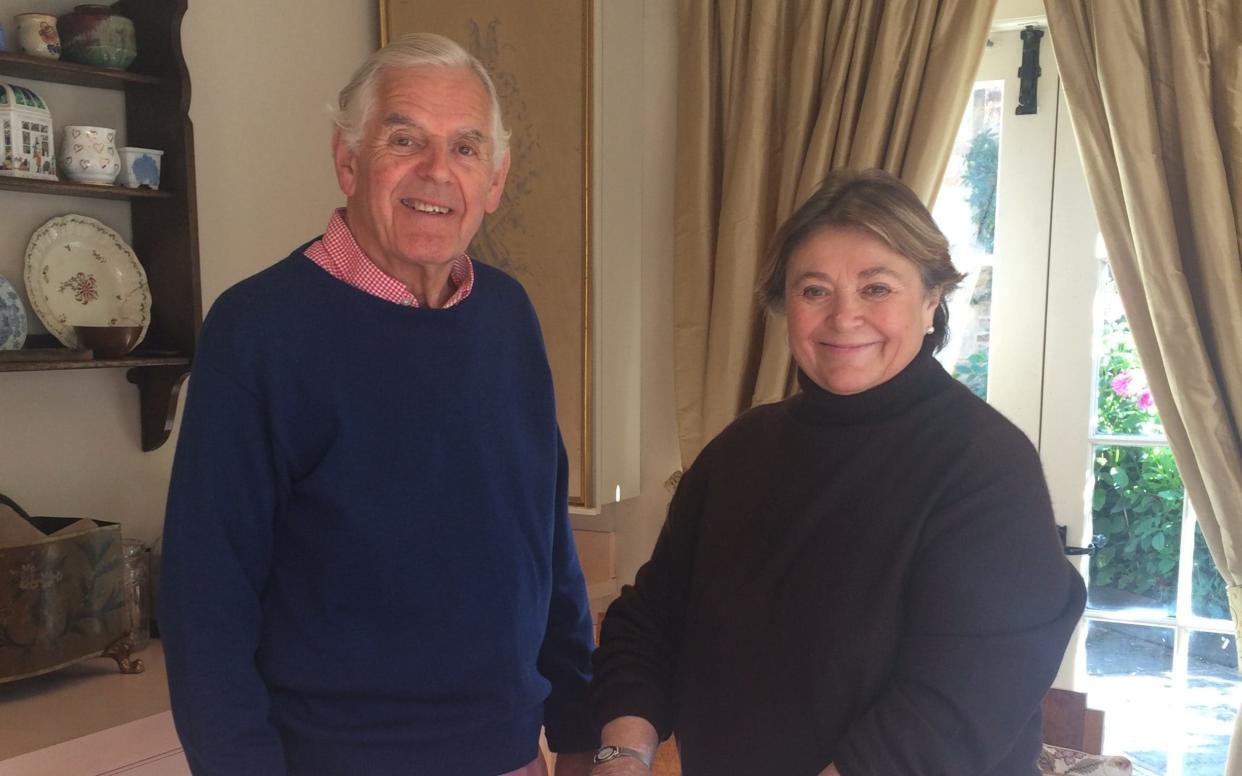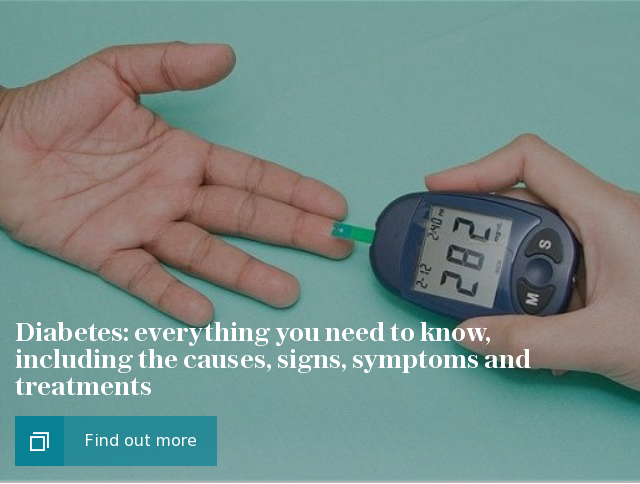We ate our way out of diabetes – and so can you

The news came as a shock. I thought I had been feeding my family a healthy and balanced diet for 50+ years – and yet here, in plain, scientific language, was confirmation that something had gone awry: both my husband and I were diabetic; my husband dangerously so.
In truth, my diabetes was less surprising than his. During our 50 year marriage, I'd managed to expand to twice the bodyweight that I'd been on my wedding day. When the doctor told me I was mildly diabetic, well, I suppose I could have guessed.
But my other half was different. He was tall and well built when we married, and he'd only ‘rounded’ slightly as the years passed. Yet the numbers never lie. He went to the doctor about a hearing test one day, had a test for type 2 diabetes in the same visit, and came home with a reading – 97 – that put him at the high end of very dangerously diabetic. The average should be below 42; I was on 67.
Looking back, the evidence was there. We'd slipped comfortably into a routine of high consumption. A full breakfast, followed by a cup of coffee (or hot chocolate) and maybe ‘just one' biscuit; lunch (balanced, you understand, and healthy) of two courses, proceeded by a glass of sherry and then coffee and ‘just’ one chocolate; afternoon tea – a perfect little rectangle of a thinly cut white bread with cucumber and a piece of cake, in turn followed by a gin and tonic at 6pm; a bowl of soup and a ‘tasty morsel’ at 7.30pm; and finally, to bed, with a hot chocolate and, probably, just one more biscuit. However healthy and balanced the main courses during that day, the sheer weight of calories and sugar will get to you sooner or later.
So, something had to be done. Fast.
I refused medication as a matter of principle (my husband took Metformin; doctors told him that his diabetes was so severe, he would be on drugs for the rest of his life). Instead, I set to work to find out as much as I possibly could about this blight called Diabetes 2 that affects between 3.5 and 4 million people in the UK – a figure that's estimated to rise to five million by 2025. The good news is that the illness can be reversed. Labour politician Tom Watson recently revealed that he has successfully kicked his Diabetes 2 to the curb, through diet and exercise.

I had a hunch that the answer to our illness was in the food on our table. Diet had been to blame for our diabetes, and now it could take the responsibility of curing us.
What I found, during hours and hours of internet research, was a heap of information so conflicting that it was almost indigestible (excuse the pun). However, there seemed to be agreement around a few central principles...
Avoid processed food of any sort
Avoid dairy (with some exceptions on the cheese front). This meant finding a diary alternative, which I found to be a matter of trial and error. Everything tastes odd after years of cows' milk
Avoid alcohol and soft drinks. The really hard bit. Fizzy water becomes your treat. Please feel free to add a slice of lemon or lime and some ice cubes for variety
Stick to European fruits like apples (more exotic fruits tend to be sugary). Also, dried fruits are out: they're a sugar-fest
Be careful about root vegetables (some, such as carrots and potatoes are very sugary). Green vegetables are better
Eat beans, pulses, nuts and seeds until you start twittering like a bird
Be mean about eating red meat. Stick to chicken, fish and vegetable for main courses
From these start points, there are a bunch of grey areas and general difficulties that need overcoming. Bread, for example, is a complete minefield. White bread is out. Whole grain flour is what you want (such as spelt, rye and 100pc stone ground wholemeal) – but beware their raising agent, because standard bread uses standard yeast that requires sugar in the process. Rye bread without any wheat flour seems to be the answer.
As for what you put on your bread, butter is out, so I started to drizzle olive oil instead (great on warm toast). My husband loves peanut butter, but a lot of commercial peanut butter has a high sugar content. Now I make my own by whizzing peanuts in the food processor until the mixture goes quite smooth (ish), then just adding a little olive oil to loosen it if it is really too thick. Marmite is a good alternative... as long as you don't hate it.
While we're on the topic of carbs, potatoes, pasta and rice make the black list, which leaves a large hole on the dinner plate. I found that bulgur wheat, couscous, pearl barley and cauliflower ‘rice’ (a wonderful standby option) filled the gap.
Although sugar is, obviously, banned there comes a moment when it is just essential to add some sweetness, especially for puddings. There doesn’t really seem to be anything natural that you can add. However, stevia (from a plant) was the nearest I could find in terms of being an ‘un-messed about’ sweetener. It is scarily expensive, however, which encourages light usage.

With all of these changes you will find the first two weeks or so quite hard but you will settle down and things will ‘normalise’ and you will lose your sweet tooth and the cravings that go with it. One important additional factor is exercise – which I've always hated. I started walking for 20 minutes a day, and then upped it to 40 minutes as I grew fitter.
After three months, our blood tests showed that my husband and I had both dropped to a sugar level deemed safe by the medical profession (low 40s – i.e. pre-diabetic). Three months later, my husband is now officially non-diabetic.
The rather wonderful bi-product of this, which was not really intended when I began all this, is that in the space of six months we have shed a combined total of 7.5 stone. We both feel fitter, sharper and just generally younger – which is a good thing as we have a four-year old grandchild and another one on the way!
My husband is now coming off Metformin, and I've managed to avoid it completely. We have no intention of going back to our previous indulgences, but we have made one small concession: we will have a glass of very good wine or artisanal gin and tonic once a week. And we will jolly well enjoy it.
Penny Methuen collects her diabetes-friendly recipes at howtokickdiabetes2.co.uk. Here are two of her favourites...
Kedgeree
Serves 4
400g salmon fillet
285ml soya milk
4 x eggs (hard boiled and quartered)
200g pearl barley (rinsed and drained)
1x green pepper (diced finely)
3x celery sticks (diced finely)
1x onion (diced finely)
3 tablespoons olive oil
850ml chicken or vegetable stock
2 dessertspoons curry powder
Salt and pepper to taste
A little finely chopped parsley as a garnish
Soften the vegetables gently in a pan with the olive oil on medium to low. Add the curry powder and cook for half a minute.
Add the pearl barley and incorporate into the vegetables.
Add the stock and bring to the boil, stirring continuously and simmer until the barley is cooked.
Meanwhile just cover the fish in soya milk and bring to boil (add a little water if needed to ensure the fish is fully covered). Boil for three minutes. Cover with a lid and leave to stand for 5 minutes until the fish is cooked through in the residual heat.)
Strain and discard the liquid and skin and flake the fish.
When the barley mixture is cooked add the flaked fish and eggs.
Serve garnished with parsley.
Apple crumble
Serves 4
8 x Large, sweet eating apples (peeled, cored, quartered and sliced thinly)
4x Oatcakes
225g mixed nuts
1x dessertspoon Truvia
Light drizzle of olive oil
Heat the oven to 200C.
Microwave the apples, covered in a dish, for approx. 4 minutes until soft. (they can be cooked gently in a saucepan with a little water if preferred).
In a food processor blitz the oatcakes, mixed nuts and Truvia until like breadcrumbs.
Sprinkle the topping mixture onto the cooked apples and drizzle very lightly with the oil.
Place the apple crumble into the oven for about 10 minutes to brown (be careful as it does burn easily).
Serve with soya yoghurt sweetened with ¼ tspn Truvia and a few drops of vanilla essence.
This recipe is also good using pears instead of apples

 Yahoo News
Yahoo News 
